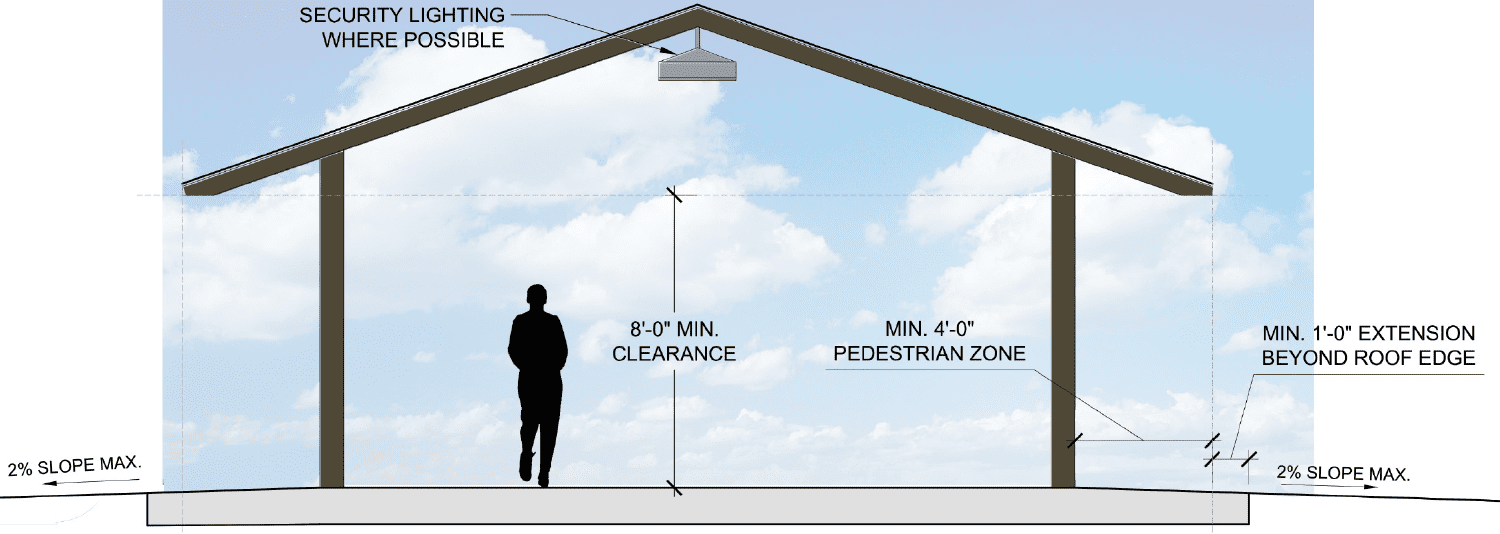 Shelters are an important amenity along the greenways.
Shelters are an important amenity along the greenways.
Shelters should be placed where gathering of users is likely to occur, and in areas where placement of canopy trees is not feasible. Shelters are great opportunities for design expression and creativity, but the description and drawing on this page should serve as a basis of design.
- Pre-manufactured structures are preferred, except when a unique design is desirable
- Structures with minimal number of columns/posts are preferred for flexibility of use
- Where possible, provide electrical outlets at shelter columns
- Coordinate all electrical or other penetrations in structural members with manufacturer/design engineer to avoid field modifications and resulting rust accumulation.
- Weep holes to be provided in upright posts for drainage, or as recommended by manufacturer.
- Concrete slab to be designed with slope to drain stormwater away from shelter. Slab to extend 1’-0” min. from edge of roof to catch runoff from rooftop.
- Medium and large shelters should typically be placed near parking areas.
- The space requirements for decorative column wraps in wood, stone or brick should be considered in space allocation for tables under structure.
- Design of structure should limit bird nesting potential, nest preventatives should be used as required.
MATERIALS:
- Structure: Powdercoated metal or glue-laminated timber.
- Roofing: Standing seam metal or asphalt (architectural) shingles.
- Security lighting where possible.
STANDARD CROSS SECTION

| SHELTER SIZE SELECTION | ||
| SHELTER SIZE FOOTPRINT | NUMBER OF TABLES | NUMBER OF PEOPLE |
| 12’ x 12’ – SMALL | 1 | 6 |
| 16’ x 24’ – MEDIUM | 6 | 36 |
| 20’ x 34’ – LARGE | 10 | 60 |
Environmental Graphics
Shelters provide a valuable opportunity for the installation of visual elements that elevate brand awareness, enhance user experience and communicate interpretive messages. Great Rivers Greenway has created an environmental graphics toolkit that contains various designs and elements that can be considered during the planning and design process.
